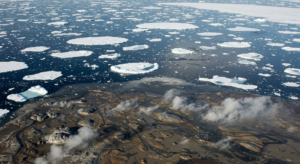 Despite global commitments like the 2016 Paris Agreement pledge to keep warming under 1.5°C, the planet’s temperature surpassed that mark in 2024. Key points include:
Despite global commitments like the 2016 Paris Agreement pledge to keep warming under 1.5°C, the planet’s temperature surpassed that mark in 2024. Key points include:
Accelerated Warming: Global temperatures have increased faster than anticipated, largely because the Arctic is warming nearly four times faster than the rest of the world. The rapid loss of sea ice exposes dark ocean water, which absorbs more sunlight and creates a feedback loop that speeds up warming.
Thawing Permafrost: As the Arctic warms, permafrost is melting and releasing significant amounts of carbon dioxide and methane. This release of greenhouse gases further intensifies global warming, echoing the emissions of industrialized nations.
Global Impacts: The melting Arctic ice is not an isolated issue—it is reshaping weather patterns worldwide. The effects include intensified storms, longer and more extreme heat waves, and increased risks of droughts and wildfires. Coastal communities face additional challenges from rising sea levels and altered marine ecosystems, while newly accessible Arctic shipping routes and fossil fuel reserves may spark geopolitical tensions.
Future Projections and Urgency: Current policies could lead to an average warming of 2.7°C by the end of the century. This scenario poses severe economic, social, and environmental challenges, highlighting the urgent need for both mitigation of emissions and adaptive strategies at global, national, and local levels.
Source: Earth.Com
